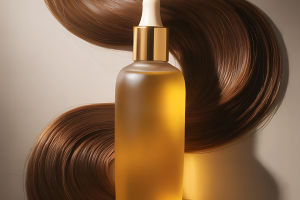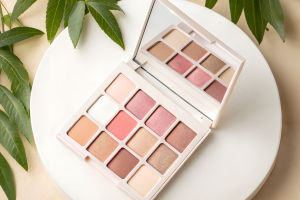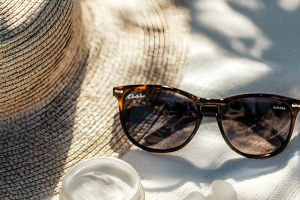We all know how much a hairstyle can transform our look, and it's incredible how the evolution of hairstyles mirrors changing trends in culture, fashion, and even technology.
Hairstyles aren't just about looking good—they represent our identity and personality. So, how did we go from the neat and structured styles of the past to today's more relaxed and edgy looks? Let's dive into this fascinating journey.
Classic Hairstyles: Elegance and Precision
In the past, hairstyles were often a reflection of social status, formality, and a strict sense of decorum. The early 20th century, especially the 1920s and 1930s, saw the rise of iconic styles like the finger wave and the bob. These looks were all about precision and neatness, often requiring meticulous work to achieve that polished finish. Women's hair was often curled or waved to create structured, defined styles, while men favored slicked-back looks like the pompadour.
These hairstyles were designed to show that a person took pride in their appearance and followed the current social norms. Whether it was the finger waves of the Jazz Age or the clean-cut looks of the 1950s, these styles demanded maintenance and commitment to upkeep.
The Evolution: Influence of the '60s and '70s
As we moved into the 1960s and 1970s, hairstyles began to evolve with the influence of the counterculture movement. Long, natural, and free-flowing hairstyles became the new trend, challenging the rigid, structured styles of the past. Women embraced the "wild" look with long, voluminous hair, often paired with bangs, while men started to grow their hair long in line with the spirit of the times.
The 1960s saw the birth of the "beehive"—a towering and structured hairstyle that became a symbol of femininity and fashion. The '70s introduced the "Layered cut," a layered, textured cut that was more relaxed and versatile. These styles marked a shift in societal attitudes, where personal expression began to take precedence over conforming to traditional norms.
The 1980s: Big Hair, Bold Statements
If there was ever a decade known for bold and dramatic hairstyles, it would be the 1980s. Big hair ruled the era, with volume and height becoming the central focus. Women went for teased, permed, and curled hair, while men embraced the mullet—a style that's still a source of nostalgia for many.
The 1980s also saw the rise of iconic celebrities whose hair became synonymous with their image. Think Madonna with her bleached, voluminous locks, or Michael Jackson with his jerry curls. This was the era of hairspray, mousse, and creating an image that was larger than life. Hairstyles in the '80s weren't just a beauty statement; they were a way to express boldness and confidence.
The '90s to Early 2000s: The Era of Minimalism
The 1990s brought a shift toward more minimalist, natural hairstyles. The obsession with volume and extravagant styles started to fade, and in came the sleek, straight, and shiny looks. Jennifer Aniston's "Rachel" haircut from Friends became the most iconic style of the decade, characterized by its layered, feathered cut.
For men, short, clean-cut looks became increasingly popular. Think of the "spiky" hairstyle that many young men sported during the late '90s—achieved with a liberal amount of gel and styling products. This era marked a departure from the extravagance of the '80s, with both men and women opting for more manageable and low-maintenance looks.
Modern-Day Styles: Versatility and Individuality
Fast forward to today, and we see a diverse range of hairstyles that cater to all types of personalities, lifestyles, and hair textures. The rise of social media has significantly influenced how we view and create hair trends. People now experiment with color, length, and texture in ways that were previously unimaginable. From pastel hues to bold pixie cuts and Afro hairstyles, there's something for everyone.
We've also witnessed the return of some classic styles, but with modern twists. The bob, for example, has evolved from a structured, sharp cut to a more relaxed and asymmetrical look. The pixie cut has also made a comeback, but now it's edgy and textured, embracing individuality more than ever before.
Hair Trends and Technology: Changing the Game
With the advancement of hair care technology, maintaining healthy hair and achieving intricate styles has become easier and more accessible. Today, we have tools like curling wands, straighteners, and blow dryers that allow us to recreate salon-quality styles at home. Moreover, with the availability of hair extensions, wigs, and color treatments, it's possible to transform your look without having to make drastic changes.
These innovations have allowed hairstyles to become more experimental and diverse, offering people the freedom to express their style in creative ways. Technology has also played a role in the development of haircare products that nourish and protect the hair, keeping it healthy while experimenting with different trends.
Conclusion: Where Will Hairstyles Go Next?
As we look back at the evolution of hairstyles, one thing becomes clear: they reflect the changing times, cultural shifts, and advancements in technology. From the neat, polished cuts of the early 20th century to the bold and experimental looks of today, hairstyles have evolved alongside us. The future? Who knows! With technology advancing and fashion ever-changing, we can expect even more exciting innovations in hair trends that we might not have imagined before.
What do you think? Are you ready to embrace a new hairstyle or experiment with a look from the past? Let us know your thoughts and favorite hairstyle era in the comments!


